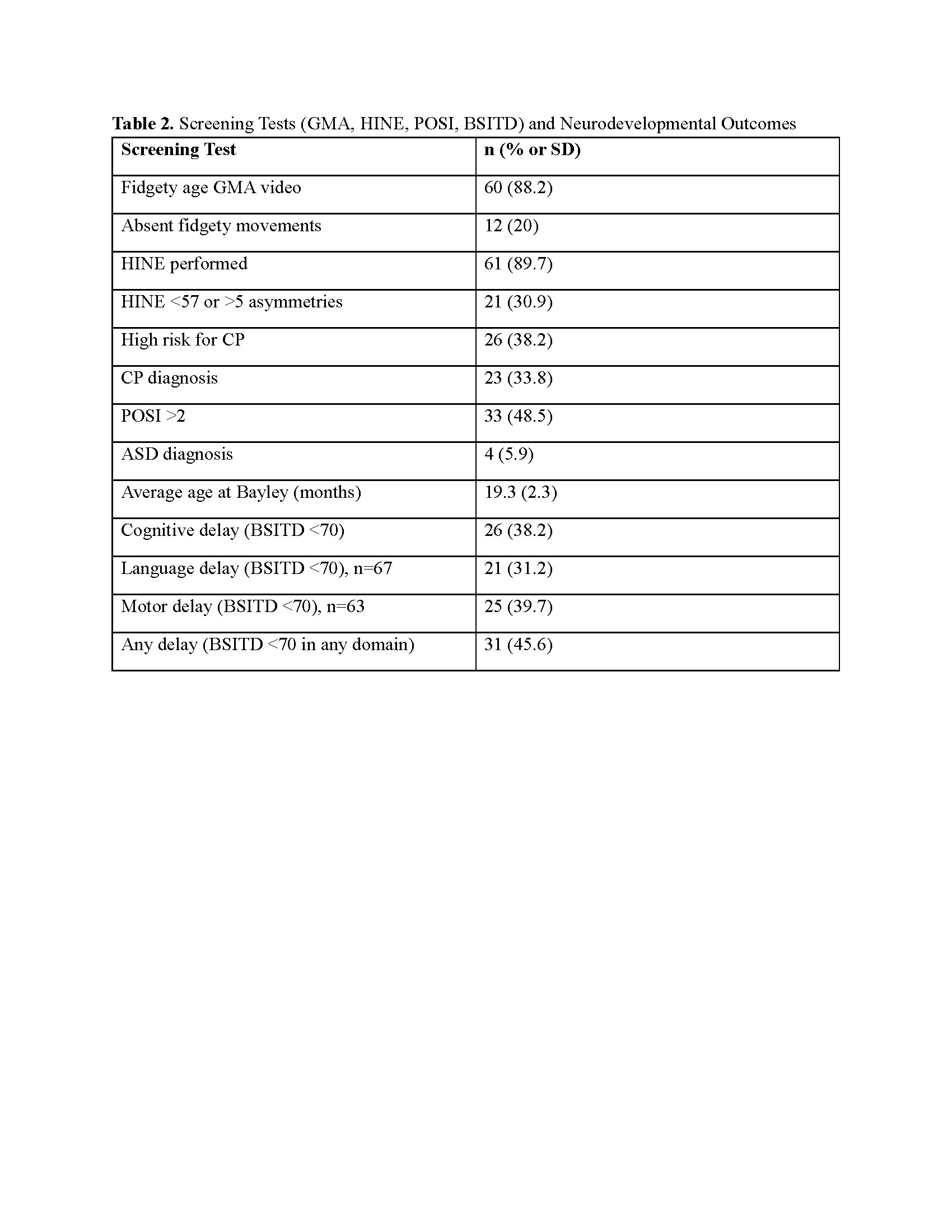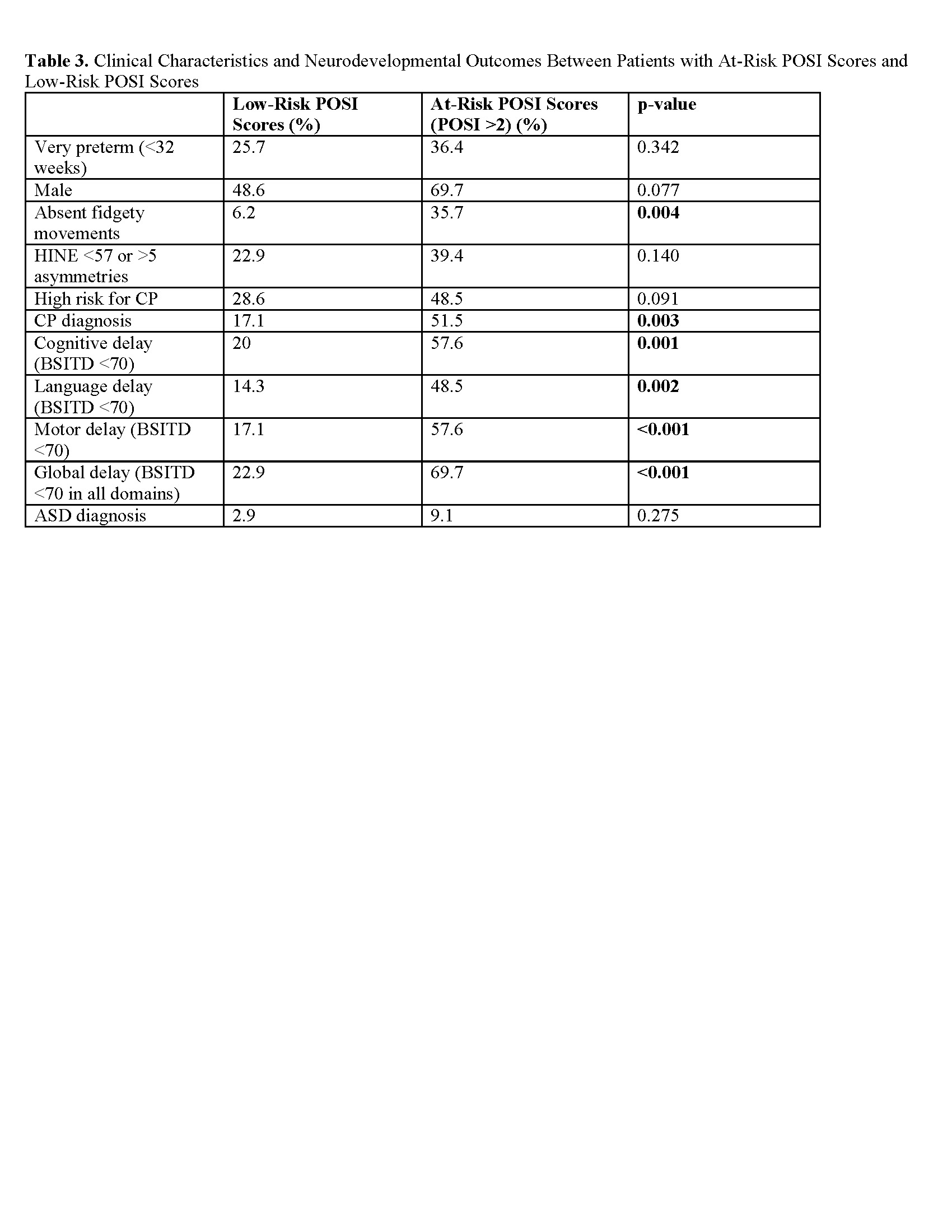Neonatal Neurology 6: Neurodevelopment
Session: Neonatal Neurology 6: Neurodevelopment
678 - Social Development in High-Risk NICU Graduates with Moderate to Severe Neuroimaging Abnormalities
Sunday, April 27, 2025
8:30am - 10:45am HST
Publication Number: 678.6919
Lydia Vielmetti, Ann & Robert H. Lurie Children's Hospital of Chicago, Chicago, IL, United States; Nicole Pouppirt, Ann & Robert H. Lurie Children's Hospital of Chicago, Chicago, IL, United States; Sharon Veis, Ann & Robert H. Lurie Children's Hospital of Chicago, Chicago, IL, United States; Lynn D. Boswell, Ann & Robert H. Lurie Children's Hospital of Chicago, Chicago, IL, United States; Sarah Heigel, Ann & Robert H. Lurie Children's Hospital of Chicago, Chicago, IL, United States; Raye-Ann deRegnier, Ann & Robert H. Lurie Children's Hospital of Chicago, Chicago, IL, United States
- Rd
Raye-Ann deRegnier, MD
Professor of Pediatrics
Ann & Robert H. Lurie Children's Hospital of Chicago
Chicago, Illinois, United States
Presenting Author(s)
Background: Infants with neonatal brain injury or developmental abnormalities are at risk for developmental delays and motor impairments. However, there has been minimal research on social development and the risk for autism spectrum disorder (ASD) in this group of infants.
Objective: To evaluate social development in toddlers with moderate to severe neonatal neuroimaging abnormalities and to identify correlations between social development and neurodevelopmental impairments.
Design/Methods: This retrospective cohort study included 68 toddlers born in 2020-2021 with grade 3-4 intraventricular hemorrhage, cystic periventricular leukomalacia, stroke, brain developmental abnormalities, or hypoxic-ischemic encephalopathy with moderate-severe neuroimaging findings. Social development was assessed using the Parent’s Observations of Social Interactions (POSI), a brief, targeted autism screener focusing on social and play behaviors. It was administered alongside the Bayley Scales of Infant and Toddler Development (Bayley-IV) at 18-36 month visits. At-risk POSI scores (>2) were correlated with neonatal clinical characteristics, developmental delays (Bayley-IV score < 70), and diagnoses of cerebral palsy (CP) and ASD to date using Chi-squared tests and logistic regression analysis.
Results: Table 1 shows rates of the most common types of neuroimaging abnormalities (IVH/PVL, brain developmental abnormalities, HIE, and stroke). Nearly one half of the 68 children evaluated had at-risk POSI scores (Table 2), indicating delayed social development. There were no significant differences between at-risk POSI scores and type of neurologic risk factor. Social delays (48.5%), Bayley-IV delays (45.6%) and CP (33.8%) occured in a significant percentage of the patients in this cohort, but just 5.9% have been diagnosed with ASD thus far. (Table 2). At-risk POSI scores were significantly associated with CP, and developmental delay (Bayley scores < 70). (Table 3, Figure 1). At-risk POSI scores were associated with developmental delays (OR 5.29, 95% CI 1.68-16.64) and CP (OR 3.74, 95% CI 1.05-13.29).
Conclusion(s): Social delays were common in infants with moderate-severe neonatal neuroimaging abnormalities but mostly occurred in the context of other delays or CP. These children will be followed to identify the incidence and timing of ASD diagnoses, and how this is related to other childhood disabilities. At-risk POSI scores should be used in conjunction with developmental assessments, detailed screening tests, and neuroimaging findings as a tool to help identify high-risk social development and initiate prompt referrals for therapies.
Table 1
.jpg) Neonatal Clinical Characteristics (n=68 unless otherwise specified)
Neonatal Clinical Characteristics (n=68 unless otherwise specified)Table 2
 Screening Tests (GMA, HINE, POSI, BSITD) and Neurodevelopmental Outcomes
Screening Tests (GMA, HINE, POSI, BSITD) and Neurodevelopmental Outcomes Table 3
 Clinical Characteristics and Neurodevelopmental Outcomes Between Patients with At-Risk POSI Scores and Low-Risk POSI Scores
Clinical Characteristics and Neurodevelopmental Outcomes Between Patients with At-Risk POSI Scores and Low-Risk POSI Scores
